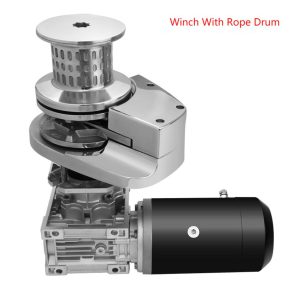Equally important are the indirect support costs that keep your programs running smoothly. Administrative oversight, financial management, IT support, insurance, facility maintenance, volunteer coordination, and grant compliance all contribute to program success. These elements work together to create a comprehensive financial framework that supports both day-to-day operations and long-term strategic goals. Above all, a budget for non-profit organizations must remain flexible enough to adapt to changing circumstances while maintaining fiscal responsibility.
Follow this nonprofit budget format to stay on track
Nonprofits, much like for-profit businesses, can write off expenses under certain criteria, supporting their mission-driven activities. While nonprofits are not taxed on income related to their mission, keeping track of eligible expenses remains crucial for compliance and financial transparency. Driver-based budgeting helps your nonprofit align its financial planning with operational activities, making adjusting to changes and improving decision-making easier.
Revenue
- Interested in learning more about how Ramp can help your nonprofit manage its expenses?
- Properly managing these costs ensures streamlined operations, ultimately supporting the nonprofit’s objectives.
- A budget should be preceded by or accompanied by set organizational goals, which will help nonprofits understand the financial implications of their proposals.
- Regularly reviewing your budget helps your organization detect and address issues early on, make well-informed financial decisions, and build trust with stakeholders by reporting on your findings.
- Partner with Jitasa to create accurate, actionable budgets for your nonprofit.
The goal of program-based budgets and allocations is to gain a solid understanding of the true costs, and staff cost is too important to leave to guesswork. The Vermont Community Foundation offers a sample organizational budget template designed to assist nonprofits in planning their annual financial activities. This sample budget outlines various categories for both income and expenses, providing a clear framework for organizations to project their yearly financial operations.
Step 9: Separate operational from capital budget
Known as the overhead myth, the principle that nonprofits must stick to a certain percentage (typically estimated between 15 and 35%) is false. It can be tricky to accurately predict how much you’ll raise from each source and categorize these funds appropriately. If you need assistance, reach out to a nonprofit accounting firm that can The Key Benefits of Accounting Services for Nonprofit Organizations take care of this forecasting and reporting for you. This category can help your organization cover unexpected repairs, unplanned staff meals, and other odds and ends. Having a miscellaneous budget line offers flexibility in your budget, helping you cover unforeseen costs as they arise. Budgeting software can streamline the budget creation and management process.
- This information can be used to estimate income and expenses for the upcoming budget period.
- It is important to monitor the budget throughout the year in order to keep a close eye on your nonprofit’s strategic plan and performance.
- By aligning your budget with your mission, prioritizing cash flow, and leveraging technology, you’ll build a strong, sustainable organization that’s ready to tackle challenges and seize opportunities.
- Many nonprofits also use a budgeting technique called cost-benefit analysis.
- At The Charity CFO, we’re here to help you master nonprofit budgeting.
- Therefore, make sure your budget narrative and the budget, with the numbers, are two descriptions of the same plan.
- While a calculation can be completed for a single program or activity, we highly recommend that these concepts and practices be used throughout a nonprofit.
- At this point, it becomes an adopted budget and goes into implementation at the start of the new fiscal year—or designated timeframe, if you’re operating on a multi-year budget.
- As an example, an afterschool program may operate in two locations or be funded by three grants.
There are several types of grant budgets you might use in a grant proposal. Each nonprofit will have its own optimal overhead allocation, depending on its age, size, geographic location, and specific needs. You may have heard that nonprofits should spend a certain amount on overhead expenses.
Get in touch with a Milestone team member
For more information, you can visit USAID’s Funding Opportunities for NGOs Worldwide. This link offers insights into various grants available that could potentially fund your project, helping you to plan your budget categories more effectively. Therefore, maintaining a flexible approach to budgeting that allows for adjustments in response to changing circumstances is essential for long-term success. In summary, understanding the various budget categories is crucial for effective financial management within any organization.
However, this approach to budgeting presents a great opportunity to bring in and unite various perspectives. Identify opportunities, threats, and emerging trends likely to influence your activities (both internal and external to your organization). Finally, get clear on and name the goals, organizational values, and priorities that you want to have reflected in this year’s budget. See how the online fundraising market is changing, what nonprofits are doing, and how you can adapt your strategies for sustainability and growth. For example, your goal for 2025 can be to increase fundraising revenue by 20% to support a new educational outreach program. Minimizing line items allows you to be flexible in allocating funds throughout the year.
Related Services
Nonprofits must create program budgets to showcase the direct impact of donations and grants. The operating budget is the core of your nonprofit budget proposal. It will cover all the expenses required to keep the organization running, from salaries and utilities to technology and insurance. Are you looking to expand a program, hire additional staff, or purchase new technology? The budgeting process begins by gathering input from the right people. Involve board members, department heads, program managers, and financial officers.
Develop draft expense budget
Likewise, failing to document employee reimbursements with receipts means that those reimbursements risk becoming taxable income. Schedule a free consultation with The Charity CFO today and let’s build a budget that empowers your mission. Even a great budget can fall short without strong cash flow management. Cash flow ensures your organization can meet its obligations month-to-month. Getting the right tools to help with research, reporting, and financial tracking will give your mission programs the support they need to grow healthily and stay resilient.



